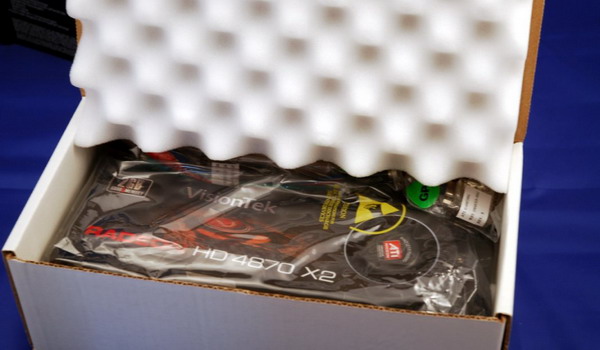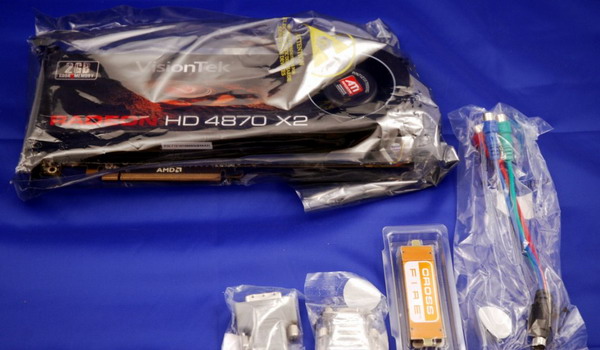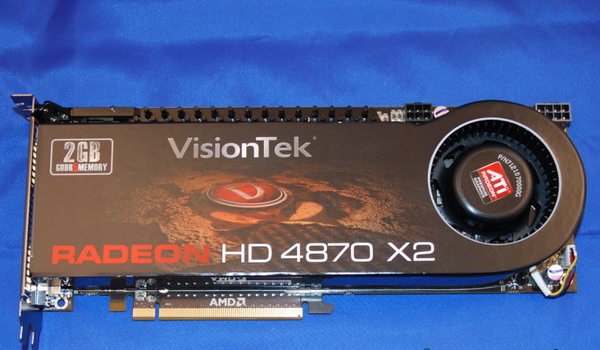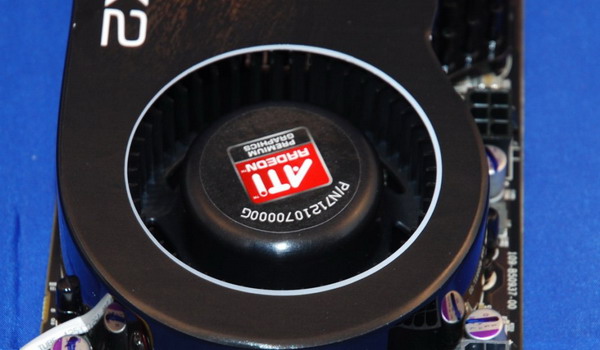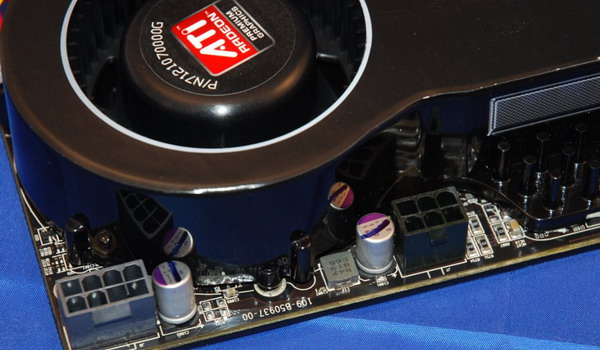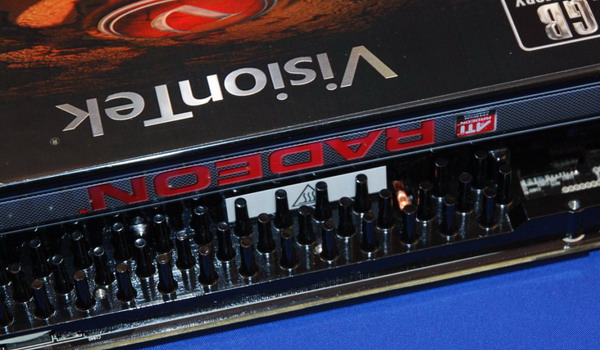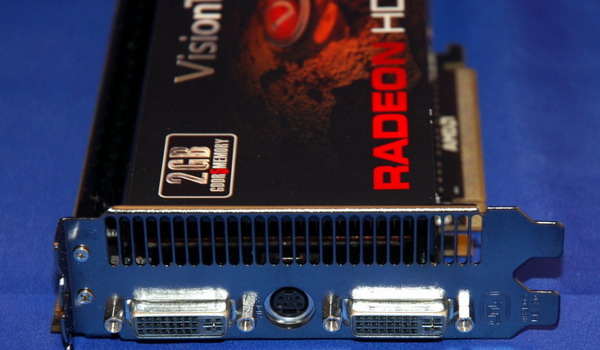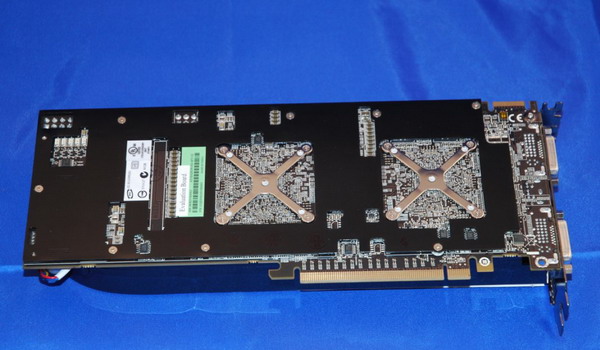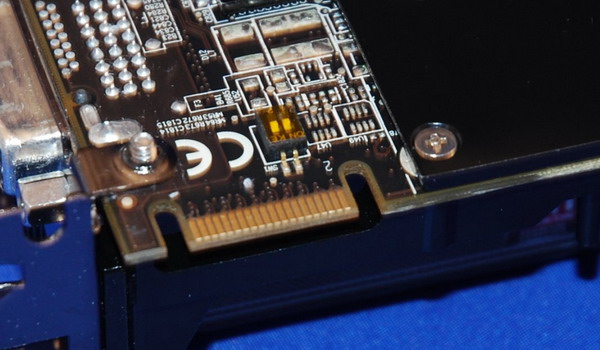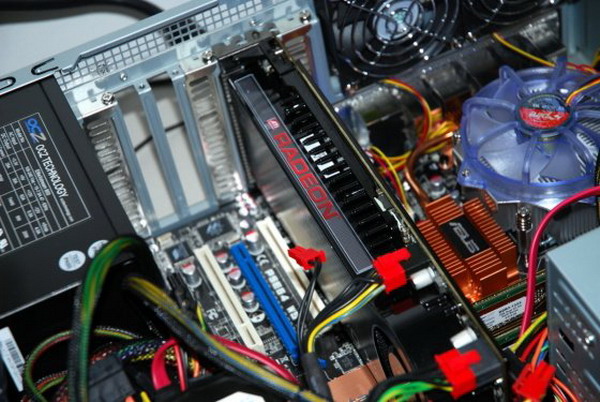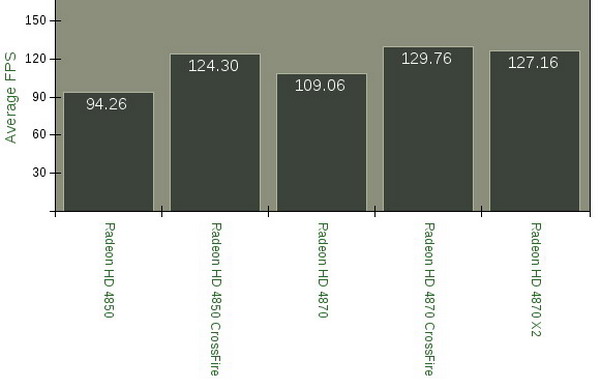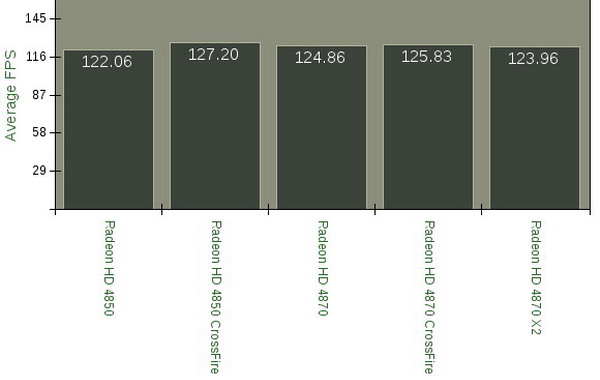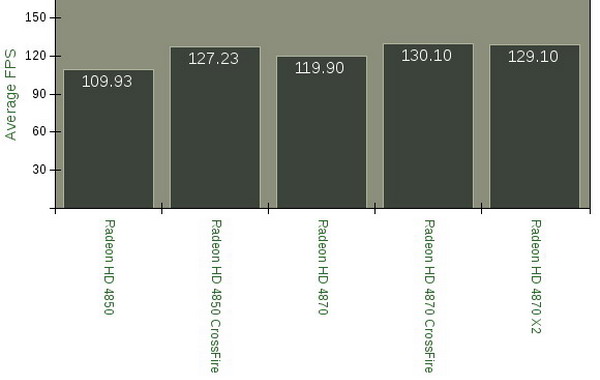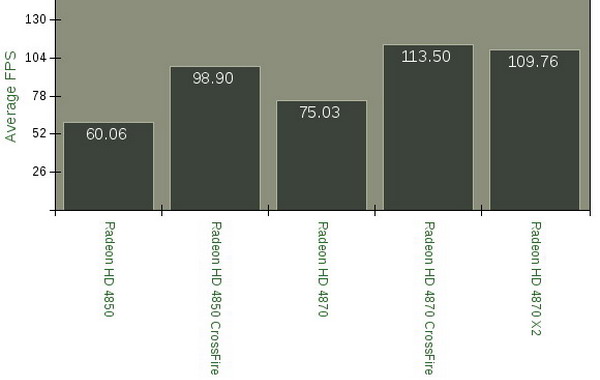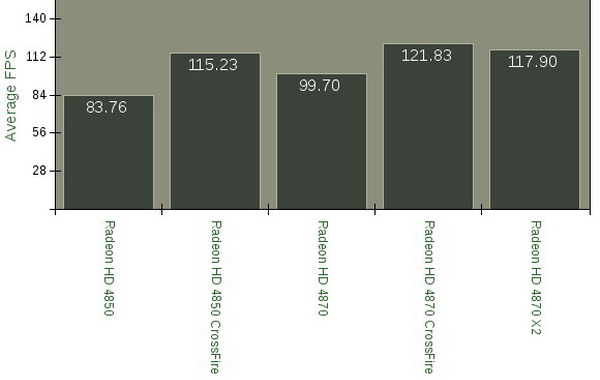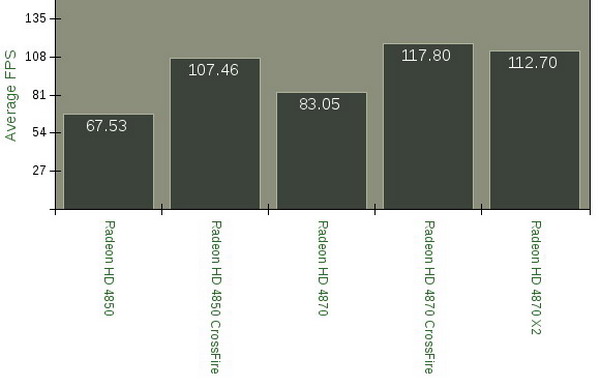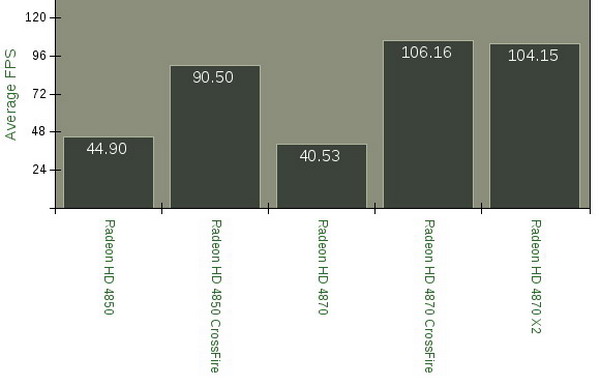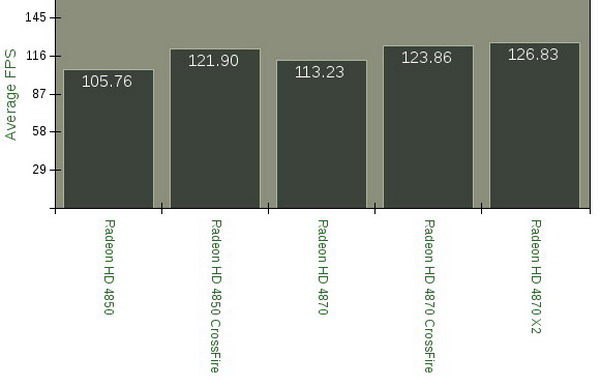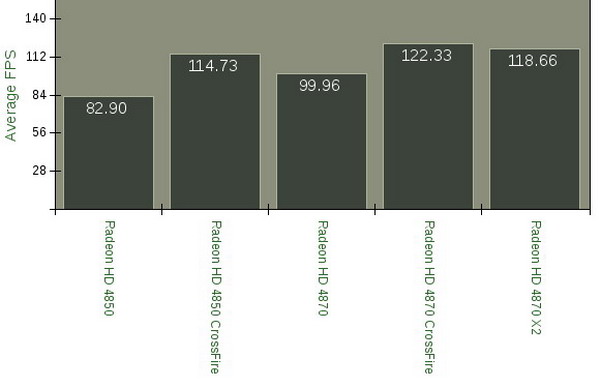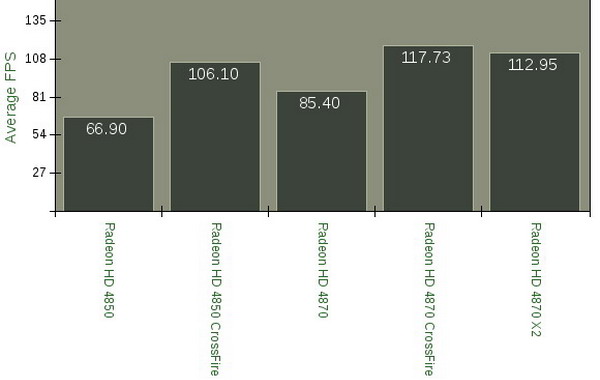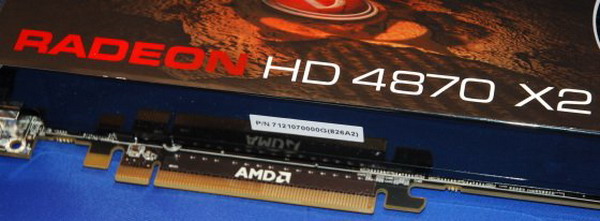Introduction
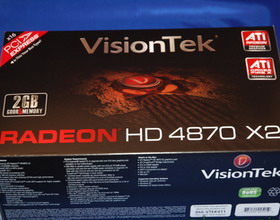 When the HD 3870 X2 came out, it was plainly exceptional. It was the first card faster than the ridiculous, and old, 8800 Ultra, and it was an ATI card on top of it. But the really cool thing about it was that it was plain. It worked right–and nobody expected that. Because it used a kind of black box CrossFire, and the only previous dual-GPU video card was terrible, people expected the new tech to showcase old flaws. But it didn’t, and how cool was that?
When the HD 3870 X2 came out, it was plainly exceptional. It was the first card faster than the ridiculous, and old, 8800 Ultra, and it was an ATI card on top of it. But the really cool thing about it was that it was plain. It worked right–and nobody expected that. Because it used a kind of black box CrossFire, and the only previous dual-GPU video card was terrible, people expected the new tech to showcase old flaws. But it didn’t, and how cool was that?
So it’s up to ATI to beat its own high score, here. There’s a trick to it: the 4870 X2 isn’t just a 3870 X2 with better GPUs, the underlying architecture is quite different. Where the 3870 X2 used a PCI-Express bridge chip (basically, a little bit of motherboard sandwiched between the processors), the 4870 X2 is designed so that the two cards share the video memory. ATI calls it a "sideport." And it does more than just simplify the board; it cranks up the bandwidth. Where the GPUs of the 3870 X2 had about 6.8GB/ second of bandwidth between them, the 4870 X2’s have a pretty unheard of 21.8GB/ second.
But maybe it’s overkill. And there are some more hurdles: a 3870 was pretty lean, power-wise, compared to the 4870, so there’s a lot more video card crammed into what is essentially an identical package. Fundamentally, the system still runs on a CrossFire backbone; sideport or not, CrossFire requires a lot of game-specific optimizations that will make or break this card. And let’s not forget the X2 boogeyman: how ’bout that microstuttering?
Incidentally, the card is a VisionTek-branded affair, stock and all. The cards I have are OEM, without accessories–the price to pay for getting them early.
First Looks
Once you go black, baby. It’s good to see that ATI is willing to use the fastest color in the PCB spectrum. (Black is up to 14% faster than identical hardware using green PCB, you see.) Really, ATI didn’t have much choice in the palette-swap, since color is the only thing visually differentiating the 4870 X2 from the 3870 X2.
There are two CF tabs at the top for CrossFire and CFX, and the 6-pin and 8-pin power connectors point up from the face of the card–considerate, given the card’s length. Had the power connectors pointed out from the front, the card might not quite fit in some cases (it’s 10.5" long).
Like I said, there’s no bundle, so let’s talk about installing and setting up the aforementioned 4870 X2. It was, colloquially, a pain in the ass. I’m going to say this up front: it has to be the pre-release drivers. They’re tweaked Catalyst 8.5 drivers, so out of date, and they wouldn’t enable CrossFire out of the box for me. As you can imagine, this was a problem.
In the end, I was never able to get it working right, exactly. In my initial tests, only one GPU would run, the other just idling away. Finally I discovered that if I used two 4870 X2s and disabled CrossFireX, that a single card would run using both its GPUs. Suffice it to say, I’ll be re-benchmarking this hardware once the retail drivers are updated and released. At least you can bask in the excitement of the launch and the early performance numbers, in any case.
NOTE: Unfortunately, we haven’t have time to take our own photos yet, as we’ve been extremely busy with the actual testing of the card. When we do the updated review, our own photos will be included.
Specifications
- 1.912 billion processors (956 million transistors per GPU on 55nm fabrication process)
- PCI Express 2.0 x16 bus interface
- 512-bit GDDR3 memory interface (ATI Radeon HD 4850 X2)
- 512-bit GDDR5 memory interface (ATI Radeon HD 4870 X2)
- Microsoft DirectX 10.1 support
- Shader Model 4.1
- 32-bit floating point texture filtering
- Indexed cube map arrays
- Independent blend modes per render target
- Pixel coverage sample masking
- Read/write multi-sample surfaces with shaders
- Gather texture fetching
Unified Superscalar Shader Architecture
- 1600 stream processing units
- Dynamic load balancing and resource allocation for vertex, geometry, and pixel shaders
- Common instruction set and texture unit access supported for all types of shaders
- Dedicated branch execution units and texture address processors
- 128-bit floating point precision for all operations
- Command processor for reduced CPU overhead
- Shader instruction and constant caches
- Up to 320 texture fetches per clock cycle
- Up to 128 textures per pixel
- Fully associative multi-level texture cache design
- DXTC and 3Dc+ texture compression
- High resolution texture support (up to 8192 x 8192)
- Fully associative texture Z/stencil cache designs
- Double-sided hierarchical Z/stencil buffer
- Early Z test and Fast Z Clear
- Lossless Z & stencil compression (up to 128:1)
- Lossless color compression (up to 8:1)
- 8 render targets (MRTs) with anti-aliasing support
- Physics processing support
Dynamic Geometry Acceleration
- High performance vertex cache
- Programmable tessellation unit
- Accelerated geometry shader path for geometry amplification
- Memory read/write cache for superior stream output performance
Anti-Aliasing Features
- Multi-sample anti-aliasing (2, 4 or 8 samples per pixel)
- Up to 24x Custom Filter Anti-Aliasing (CFAA) for superior quality
- Adaptive super-sampling and multi-sampling
- Gamma correct
- Super AA (ATI CrossFireX configurations only)
- All anti-aliasing features compatible with HDR rendering
Texture Filtering Features
- 2x/4x/8x/16x high quality adaptive anisotropic filtering modes (up to 128 taps per pixel)
- 128-bit floating point HDR texture filtering
- sRGB filtering (gamma/degamma)
- Percentage Closer Filtering (PCF)
- Depth & stencil texture (DST) format support
- Shared exponent HDR (RGBE 9:9:9:5) texture format support
Test Setup
In this review, we’ll be comparing the VisionTek Radeon HD 4870 X2 to:
- 3870 X2
- 4870
- GTX 280
- 4850
- 9800 GTX
All cards were benched on the same test computer with recent drivers (April or newer), except for the 4870 X2 which used pre-release Catalyst 8.5 drivers.
- Intel Core 2 Duo E8400 3GHz
- Asus Rampage Formula
- 2GB Crucial Ballistix Tracer DDR2 800 @ 4-4-4-12 (Sponsored by Crucial)
- Thermaltake Toughpower 1000 (Sponsored by Thermaltake)
- Windows Vista Ultimate x64 (Sponsored by Microsoft)
DirectX 10 Titles
Performance Notes
The card doesn’t deliver with these DX10 titles. While things are fine with Company of Heroes, there’s almost no difference with a single 4870 in Crysis, and there are only marginal gains in Unreal Tournament 3. The light at the end of the tunnel is with the higher resolution stuff, where the 4870 X2 at least scales better.
And I got it to stutter! In a micro-way. Playing Company of Heroes, while the drivers went brain-dead and ran the game on a single GPU, I noticed it. It was actually pretty bad like that; about every five seconds there was a little pause coinciding with an audible reduction in coil noise from the card. It’s easy to catch when there’s more than just visual cues. When the driver was working normally, there were no stutters–indicating it’s a software issue, not hardware.
DX9, OpenGL, and Synthetics
Performance Notes
And I hit a wall here with the synthetics. The card is obviously only using one GPU in all of 3DMark’s suites. Gaming, though, is really sped up. There are heavy gains with the Source Engine and with OpenGL; in fact, it’s safe to assume that the card is completely CPU-bound here; there’s almost no variation in performance across the settings.
Video Quality, Power Usage & Noise, and Overclocking
The card delivers great HD 4000 video playback, with barely noticeable moire after skipping chapters of a DVD. Normal playback is perfect.
Here’s where the surprise is for the 4000-series X2: it barely uses more power than a 3870 X2. Sure, it’s a lot, but it’s considerably less than two 4870s, and leaner than a GTX 280. There’s some good power-binning going on with these parts.
And the card is quieter than a 3870 X2 or a GTX 280, too. This isn’t because the cooling is much improved, it’s basically the same thing and the card does in fact pull more power than a 3870 X2; it’s that the GPUs can run hotter. While many people criticized the 4870 for running hot, in this case, it means that the X2 doesn’t have to scream to keep the cards from glitching out. Under load, the fan picks up quickly, with almost no discernable variation in speed, and at idle, makes about as much noise as the Intel stock cooler with PWM enabled–so it’s audible, but you’d have to be close or a stickler for noise to notice it.
There is a slight whisper of coil noise, but only when the card runs at full speed and it’s not strong enough to escape a case, and it gets quickly overwhelmed by the relatively quiet fan.
I had no overclocking luck with the sample drivers. In fact, while testing for overclocks, the test bench would blue screen on me.
Conclusion
I’m reserving any real conclusions for the 4870 X2 until I can benchmark it with retail drivers. There were just too many weird results here to make any concrete proclamations. I will say this: the card has a boatload of potential and if the only thing that stands between this card being great and it being the very best is some software to download then it will be the gamer’s choice, or at least dream card, instantly.
And again, while the drivers were misbehaving, I noticed the oft-overstated microstutters only while benchmarking Company of Heroes. Because it all appears to be software-bound, I’m not too worried about it. Everything else is shaping up to be tops: record-setting performance with decent noise and reasonable power consumption… What’s not to like?
If ATI pulls this off, they’re going to do something that only exists in PowerPoint heaven: have a performance leader at every price point. If they don’t, well…


